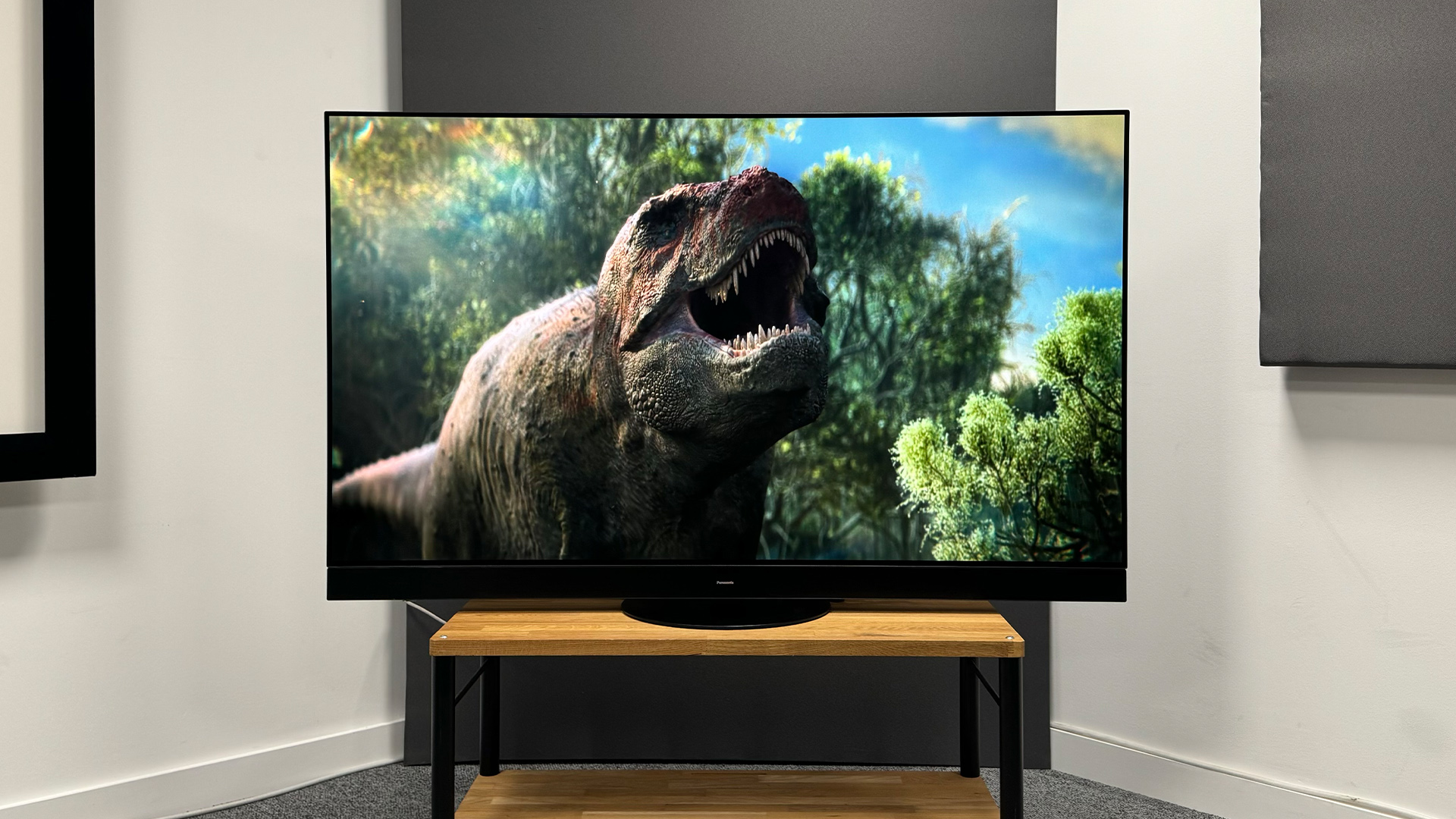
Panasonic has developed a reputation for producing some of the most authentic and accurate TVs available. So much so that some Hollywood studios import Panasonic sets for professional use (the company no longer sells TVs in the US). It’s that sort of reputation that has also made Panasonic TVs the go-to for AV enthusiasts looking to watch movies in the way the creator intended and also makes the annual launch of Panasonic’s flagship TV a serious cause of excitement for the What Hi-Fi? reviews team.
Panasonic has in recent years stuck with a flagship formula that involves combining the best OLED panel available at the time with the most sophisticated processing in its repertoire, fine-tuning by the company’s own engineers in conjunction with Hollywood colourists, and a chunky, multi-speaker Dolby Atmos sound system. It’s a formula that’s won it many plaudits over the years and, in fact, last year’s LZ2000 was probably the best TV of the year, if you took value for money out of the equation.
All of which brings us to the MZ2000, Panasonic’s flagship TV for 2023. The formula remains the same but there’s a big upgrade on the OLED panel front courtesy of brightness-boosting MLA technology. Does it make a big difference, and has Panasonic managed to implement it without deviating from its traditional values of authenticity and accuracy? The answers are ‘yes’ and ‘yes’. But there are new rivals to consider, too…
Price
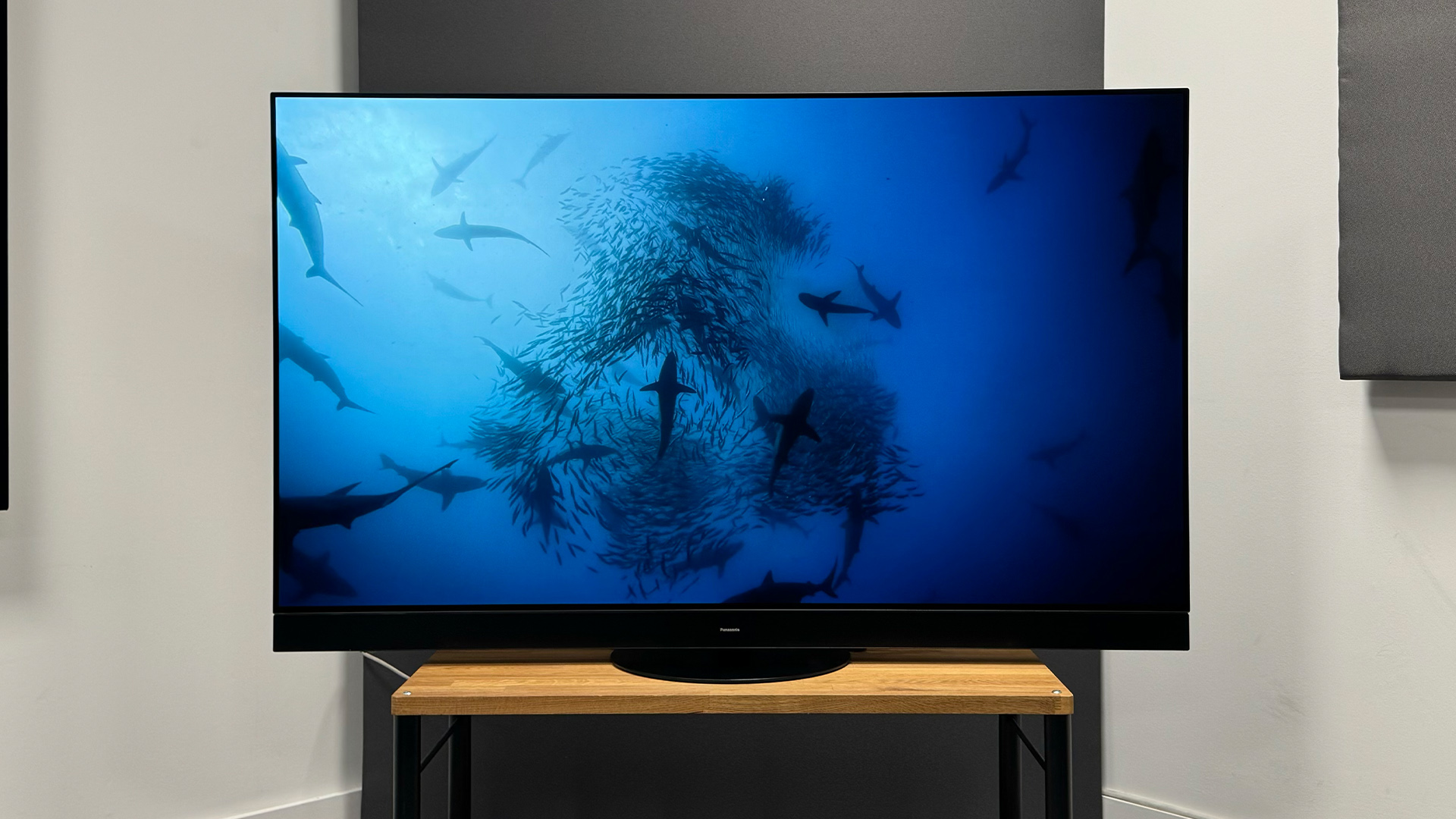
The 65-inch Panasonic MZ2000 launched at a price of £3599 (around $4400 / AU$6900), which is more or less the same price that rivals such as the LG G3, Samsung S95C and Sony A95L launched at.
The MZ2000 has now dropped to £2999 (around $3670 / AU$5760), but the LG G3 and Samsung S95C, which have been available for longer, have dropped further and are now available for significantly less. The Sony A95L, on the other hand, has dropped very little and is £500 more expensive than the Panasonic MZ2000. That final price difference is an important one, as we’ll see.
Design
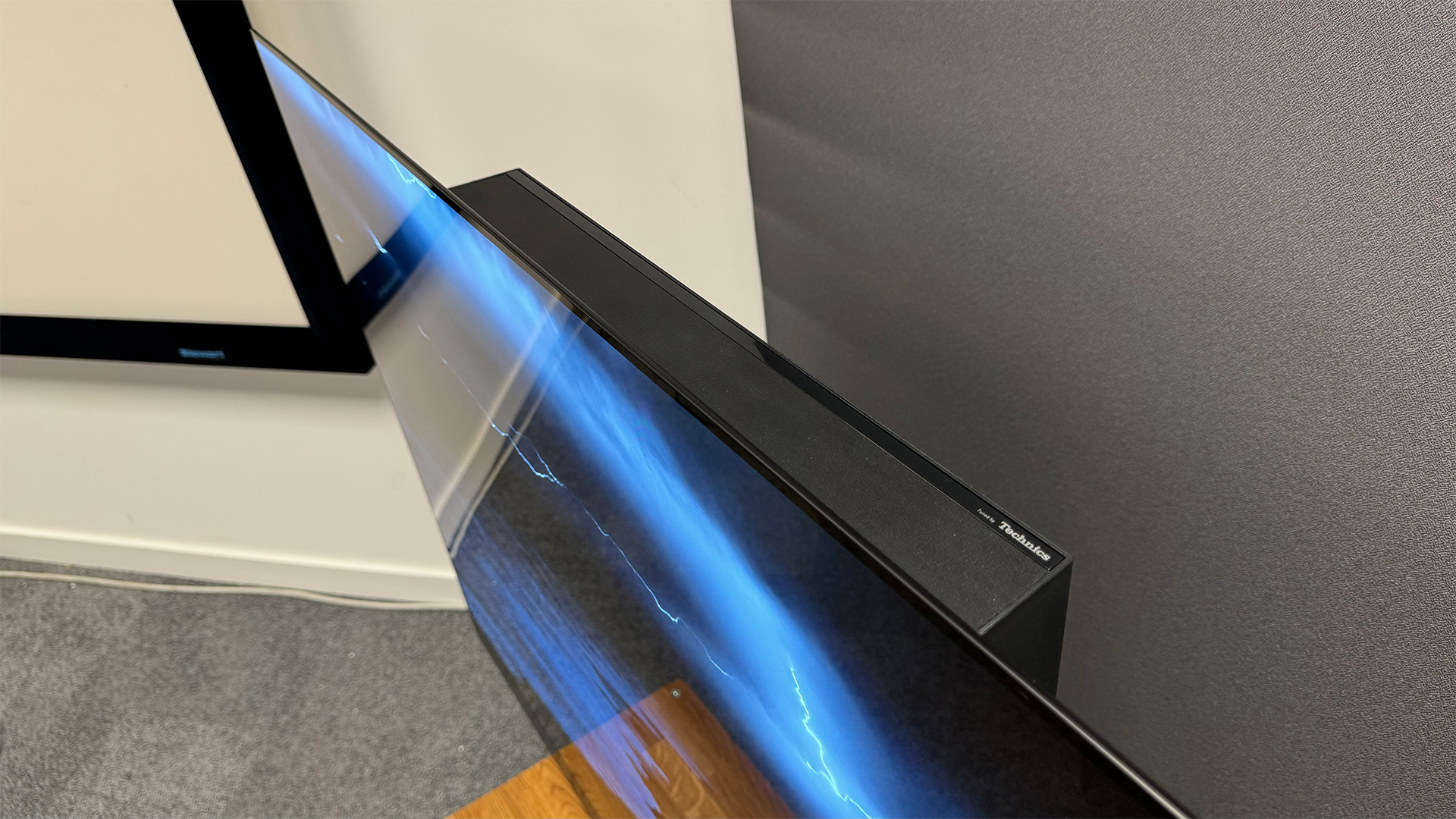
Panasonic has long pursued a function-over-form design philosophy, and while that may have prevented its TVs from appearing in the backgrounds of reality TV shows, it’s an approach with which we have no real issue.
The MZ2000 is thick to an extent that at first glance makes it look like a backlit TV, though there are some small sections of more typical OLED super-slimness. Most of the thickness is due to the sound system, which features not only forward-facing speakers arranged underneath the TV’s bottom edge but also dedicated side-firing and up-firing drivers. The more style-focused consumer might not agree, but we’re happy to sacrifice thinness if the trade-off is better sound.
There are also probably those who would prefer dainty feet such as those of the Sony A80L over the slightly old-school, circular stand of the Panasonic MZ1500B, but the latter’s compact footprint makes placement easier and the swivel function can be very handy for ensuring everyone has a good view, and for accessing the connections.
Our only real complaint about the design is that the bottom plate of the stand is slightly too thick and protrudes slightly too far forward to make it easy to place a soundbar. Panasonic would probably argue that thanks to its substantial speaker system, the MZ2000 isn’t really intended for use with a separate soundbar, but there will be people who buy the TV because they want Panasonic’s top picture performance and will want to partner that with even better sound.
Features
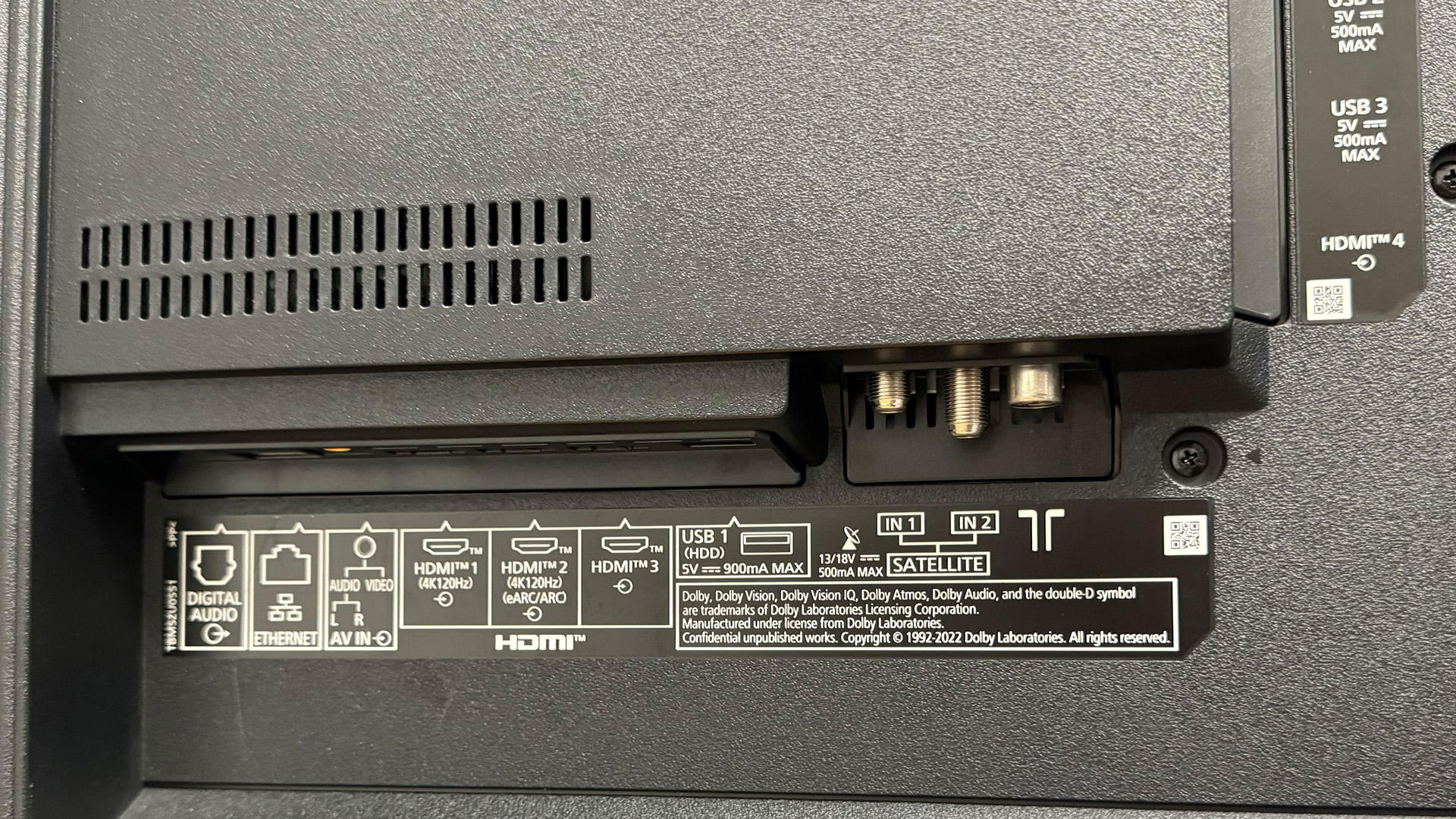
The big news here is, as mentioned, the addition of Micro Lens Array (MLA) technology to Panasonic’s 2000-series OLED formula. MLA involves a layer of microscopic lenses that focus the light from the OLEDs in order to increase brightness without the OLEDs themselves needing to be driven any harder. Although we’ve been talking about MLA for over a year now, the Panasonic MZ2000B is actually just the second MLA OLED TV to hit shops and grace our test rooms, the first having been the LG G3.
Of course, MLA isn’t the only super-bright new OLED panel technology in town, and the MZ2000 also has to compete with second-generation QD-OLED TVs from Samsung (the S95C and S90C) and Sony (the stunning A95L).
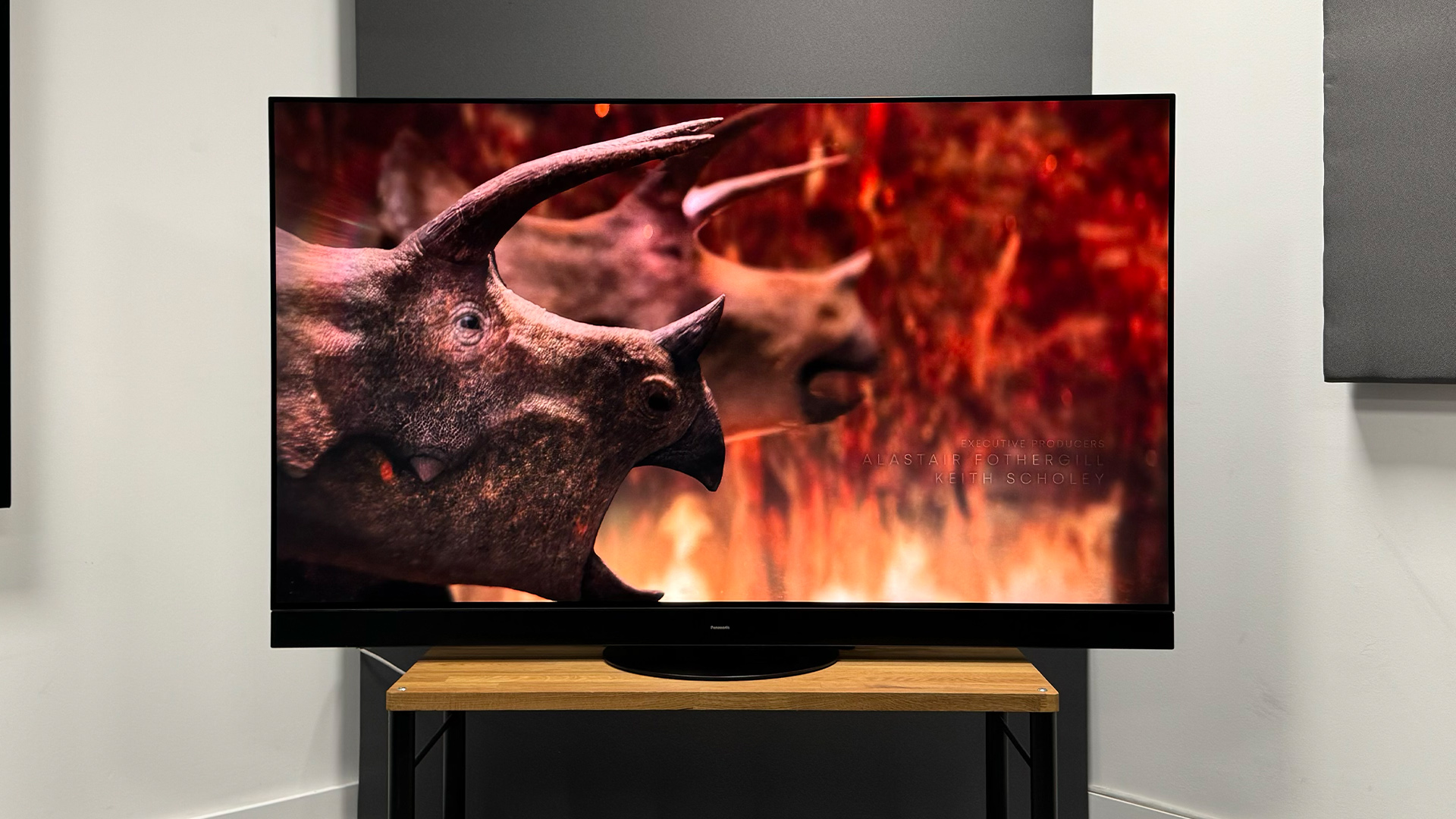
Screen size 65 inches (also available in 55in, 77in)
Type MLA OLED (77-inch model is standard OLED)
Resolution 4K
HDR formats HLG, HDR10, HDR10+, Dolby Vision
Operating system My Home Screen 8.0
HDMI inputs x 4 (2 x 48Gbps HDMI 2.1)
Gaming features 4K/120Hz, VRR, ALLM, Dolby Vision game mode (60Hz)
ARC/eARC eARC
Optical output? Yes
Dimensions (hwd, without stand) 91 x 145 x 35cm
Panasonic’s approach to this is to take the MLA OLED panel from LG Display (a different division to the TV-producing LG Electronics), add its own heat-dissipation system and bespoke picture processing, and fine-tune the whole package with the help of Hollywood colourists such as Stefan Sonnenfeld. Of course, it then also adds that substantial sound system. All told, while it shares its panel with the LG G3, the Panasonic MZ2000 is a very different beast overall.
The long-standing collaboration with Hollywood studios is illustrative of Panasonic’s aim to deliver movies and TV shows as the creator intended – or at least as close to that as it’s possible for a consumer TV to do. There’s a tacit understanding, though, that a home user can’t do all of their viewing in ideal, pitch-black conditions, which is why Panasonic’s new HCX Pro AI processor includes an upgraded Filmmaker Mode that, in conjunction with the TV’s various sensors, is automatically adjusted to ambient lighting conditions. This isn’t just an adjustment for brightness, but for colour temperature, too. The warmth or coolness of a room’s light impacts the perceived colour temperature of the TV, essentially making it look less ‘correct’, and it’s this that the upgraded Filmmaker Mode is designed to address. It’s essentially doing to the format-agnostic Filmmaker Mode what Dolby Vision IQ and HDR10+ Adaptive do to their respective HDR formats – and the Panasonic MZ2000 supports those, too.
The vanilla versions of Dolby Vision and HDR10+ are of course also supported, as are standard HDR10 and HLG, which means that unlike any TV from Sony, LG or Samsung, the Panasonic MZ2000 can handle every current HDR TV format.
The TV’s app selection isn’t as broad as its HDR format support, but it isn’t bad. Netflix, Amazon Prime Video and Disney+ are all on board and, during testing, deliver 4K, HDR and Dolby Atmos as they should. BBC iPlayer plays back in 4K HDR with the correct content, too, and the rest of the UK’s catch-up apps are all present and correct. It will be a shame for some that Discovery+ (the new home for TNT Sports, previously known as BT Sport) and Now are missing, and you won’t find more niche apps such as Crunchyroll, but the most significant shame is that you get the Apple TV+ app rather than the full Apple TV app, which means you have access only to Apple’s own streaming service and not its excellent library of pay-as-you-go movies and TV shows.
With its 2023 OLED TVs, Panasonic is also looking to extend its ‘as the creator intended’ approach to games through the addition of a True Game Mode. This has supposedly been as carefully calibrated as Panasonic's most authentic movie presets, and it can be calibrated further using the professional Calman software, should you so wish. Most of us won’t go that far and, in truth, it doesn’t feel necessary as True Game Mode provides a very satisfying performance during testing.
As with last year’s Panasonic sets, the MZ2000 supports 4K/120Hz, VRR (Freesync, G-Sync and ‘standard’) and ALLM, and there’s a Dolby Vision game mode – though this tops out at 60Hz rather than 120Hz. The bigger shame is that only two of the TV’s HDMI sockets are HDMI 2.1 spec, and the other two support neither 4K/120Hz or VRR. If you do decide to partner the MZ2000 with a soundbar or, even better, an AV receiver, it will almost certainly need to be connected using eARC, which means one of those precious HDMI 2.1 sockets will be gone and you’ll have just one left for a games console or PC. If you’re not a hardcore gamer (or you’re not a gamer at all), this won’t be an issue, but it can be a source of major frustration to those with multiple games machines. It’s worth noting that the MZ2000B shares this limitation with many TVs, including those from Sony, Philips, TCL and Hisense, but LG and Samsung have been offering TVs with four HDMI 2.1 sockets for years.
Picture
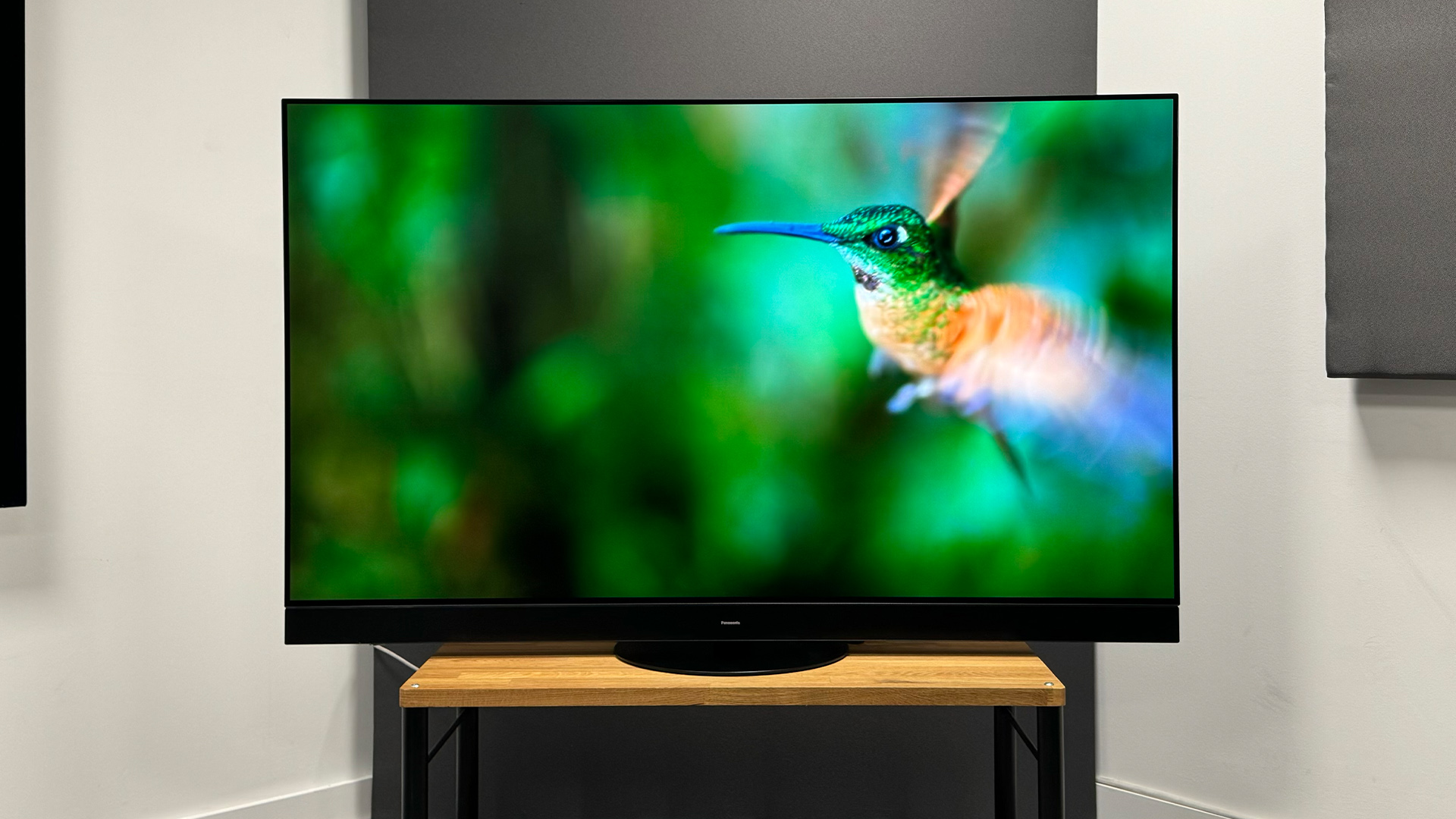
Seeing as we’re looking at one of the new generation of super-bright OLED TVs, we first fire up the super-bright Pan 4K Blu-ray. The MZ2000’s extra nits are put to very good use here, with the scene in which the flying ship approaches Neverland popping from the screen in significantly brighter and more impactful fashion than it does from the step-down MZ1500 model.
Equally as impressive is the amount of detail that the MZ2000 digs up in the brightest parts of the picture. Pan is mastered to a monstrous 4000 nits – twice what even a very bright TV such as the MZ2000 can handle – which means highlights need to be tone-mapped by the display so that they’re not over-exposed and blown out. The MZ2000 does this even better than the Sony A95L, with the wispy clouds in front of the bright sun above Neverland being far more visible.
This extra, excellent brightness would of course be a waste if it came with sacrifices elsewhere, but the MZ2000 is a superb performer more or less across the board. Switching to Blade Runner 2049 we can confirm that blacks are still perfectly deep, contrast is exceptional and shadow detail is excellent, with the set giving plenty of insight into the dingy interior of Sapper Morton’s farm without any over-brightening or exposing of elements that are supposed to be hidden. In fact, detail levels are exceptional in all lighting conditions.
Authentic, cinematic colour balance has long been a mainstay of Panasonic’s approach to picture performance, and the MZ2000 is very good here, too. It has a slightly more sepia tint than the Sony A95L QD-OLED, but this is as much down to the additional rosiness of the Sony as it is anything else, and the MZ2000B looks natural and balanced in its own right. It’s also effortlessly subtle in its shading, delivering the full range of colours in a face, rather than painting in broad strokes.
The MZ2000B also does a really good job with the tough motion of Blade Runner 2049. The set maintains a grip on K’s car as he flies through the towering skyscrapers of downtown LA and then crashes out of the sky in a later scene, and it also handles the pan across the exterior of Sapper Morton’s farm in a lovely, smooth fashion. This is all with the motion processing set at its minimum level, which ensures there’s never even a hint of artificiality or the dreaded soap opera effect.
Switching to our current 1080p test Blu-ray of choice, True Grit, the MZ2000 does a brilliant job of upscaling the very challenging source material. We find it necessary to increase the set’s Luminance a little in order to achieve a more impactful picture, which the TV does without sacrificing naturalism. For sharpness, detail, black depth and shadow detail, this TV is hard to beat, and there’s no hint of exaggeration to edges or contrast. As with HDR, the subtlety of its shading also ensures brilliantly lifelike results.
In summary, the MZ2000 is an excellent TV in terms of picture quality – but it does have a problem. That problem is the Sony A95L, which does everything the MZ2000 does while also delivering extra colour vibrancy and even greater three-dimensionality.
The colours are most obviously better in the brightest and darkest parts of the picture – both the sun over Neverland in Pan and Sapper Morton’s shadowed face in Blade Runner 2049 look a little pale on the MZ2000 but more consistently coloured via the A95L. The additional three-dimensionality, meanwhile, seems to be a result of some clever Sony processing that some might baulk at conceptually but in practice delivers stunning results that never look incorrect, but that do make the MZ2000 look a little flat in comparison.
Sound
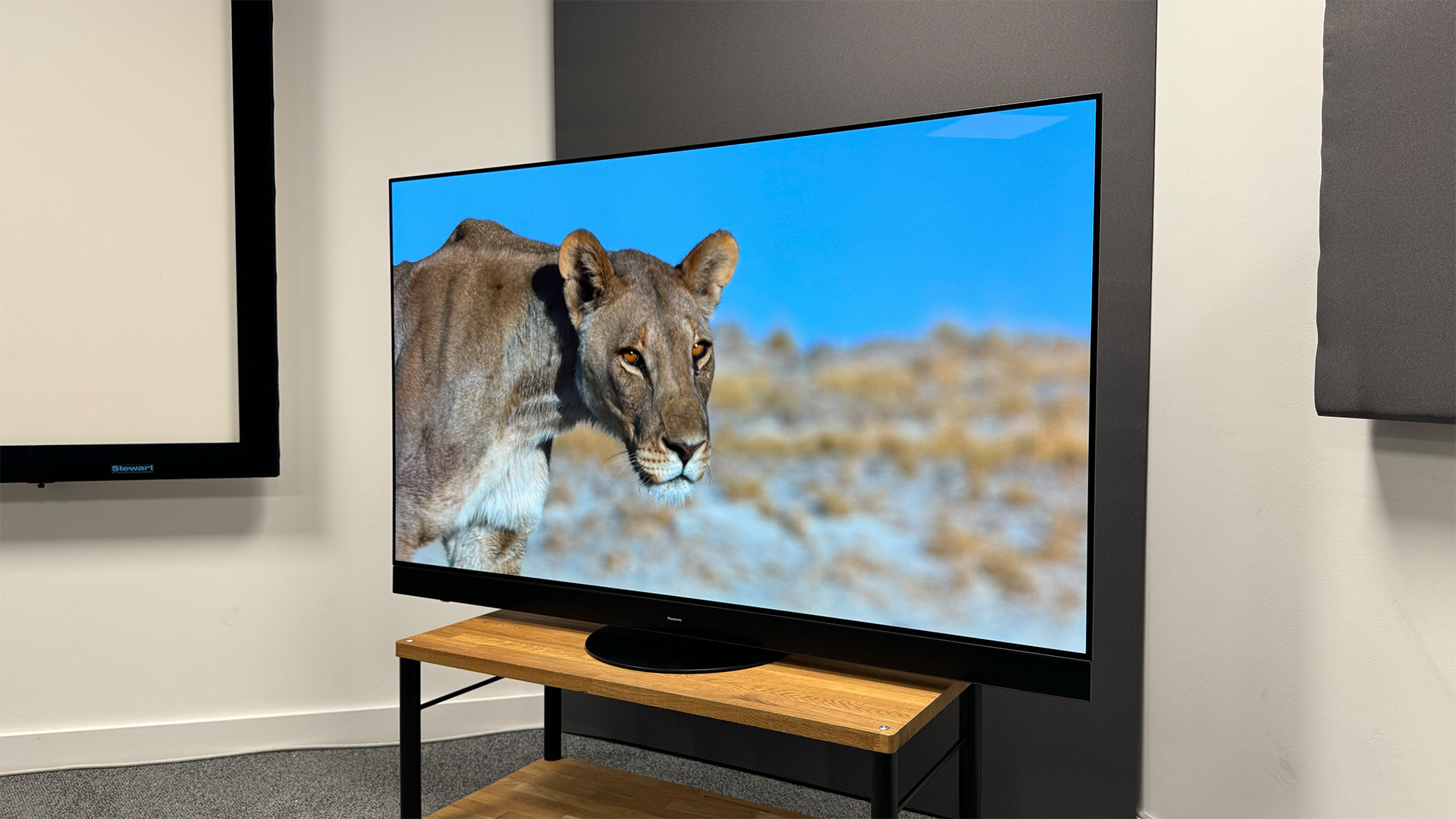
While the Technics-tuned, multi-speaker, Dolby Atmos-compatible sound system has hardly been overhauled for the MZ2000, Panasonic says that it has revised the front speaker array for a wider soundstage. Sure enough, the bombing run scene at the start of Unbroken has good width and scale, not to mention lots of deep, weighty bass by the standards of a TV.
The MZ2000 is capable of going very loud, too, and it’s this volume and heft that are most impressive when compared to other TVs, including the Sony A95L, which sounds somewhat lightweight by comparison.
In other ways, though, the MZ2000 isn’t quite on the money. While it delivers bass frequencies that TVs such as the A95L simply can’t reach, such as those in Blade Runner 2049, they can be a little woolly and ill-defined. In fact, as a whole, the sound is lacking a little bit of crispness and definition.
Most notable in the comparison with the A95L, though, is how much better the Sony TV is at creating a three-dimensional soundstage and accurately placing effects within it. In the scene on the balcony of K’s apartment in Blade Runner 2049, the Sony A95L fills the room with rain while still allowing you to audibly pick out specific drops. The Panasonic MZ2000 is more vague in comparison and much more spatially restricted.
To be clear, the MZ2000 sounds very good by TV standards and is a clear step up over the step-down MZ1500 and rivals such as the LG G3 and Samsung S95C, but it’s not up there with the new best-in-class for TV sound.
Verdict
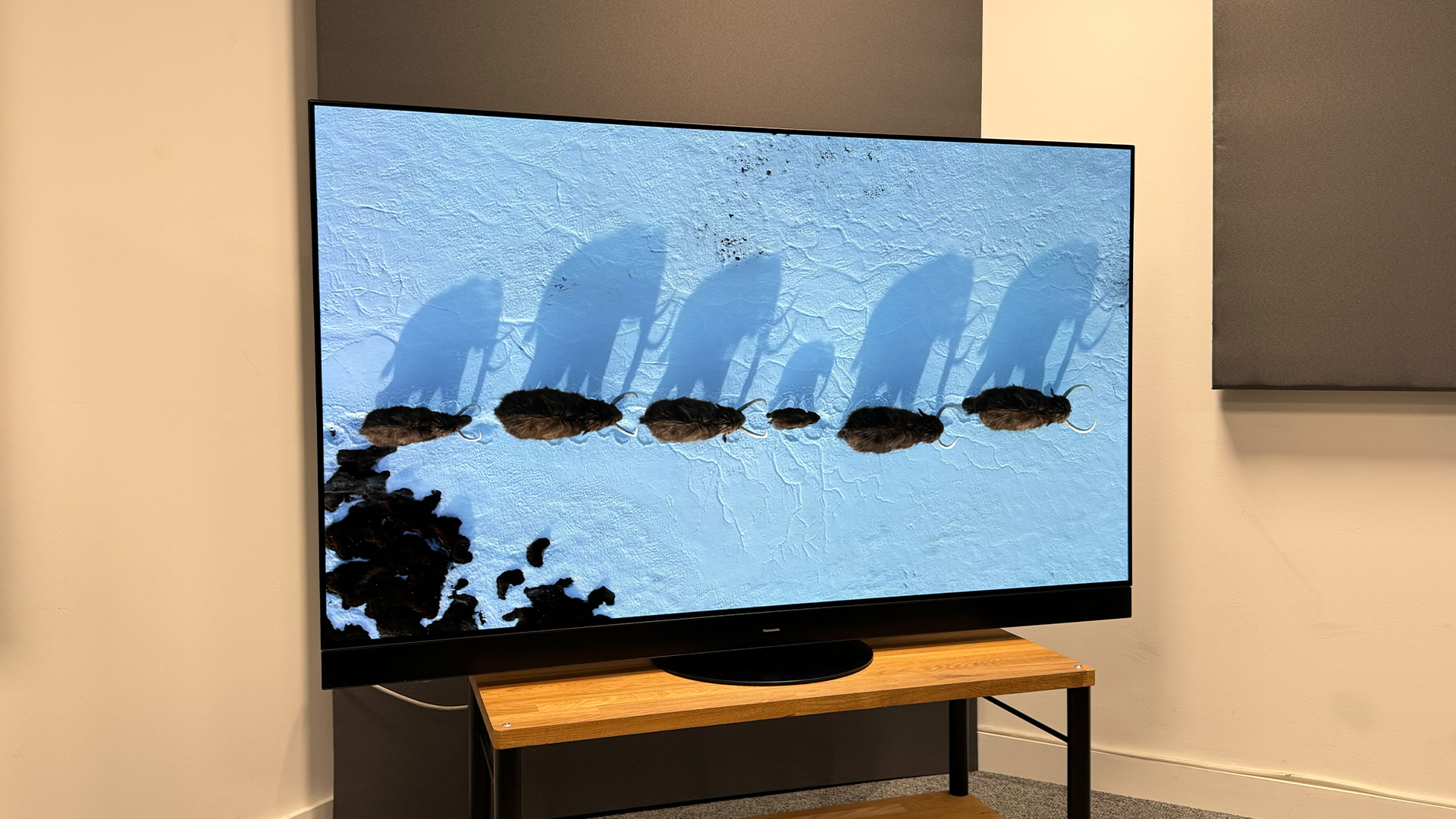
It’s a shame for Panasonic that the Sony A95L exists. If it didn’t, the MZ2000 would be the best-performing TV of the year by a decent margin. But the A95L does exist, and so the MZ2000 has to settle for a close second-best.
Be in no doubt, though – this is a superb TV that delivers the authenticity for which Panasonic is renowned with an extra hit of bright impact, plus a weighty, solid sonic presentation.
In truth, we’d like to see the MZ2000’s MLA-boosted panel technology in a TV with a lesser sound system so that we could choose an audio set-up to go with it. Perhaps that’s something for next year. Here and now, the MZ2000 is comfortably the best Panasonic TV you can buy and almost the best TV you can buy, full stop.
SCORES
- Picture 5
- Sound 4
- Features 4
MORE:
Read our review of the Sony A95L
Also consider the LG G3
Read our Samsung S95C review
Check out our review of the Panasonic MZ1500







